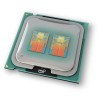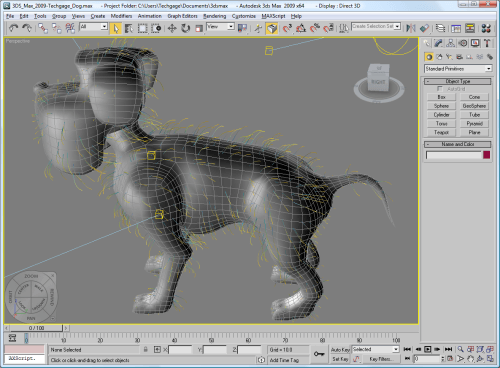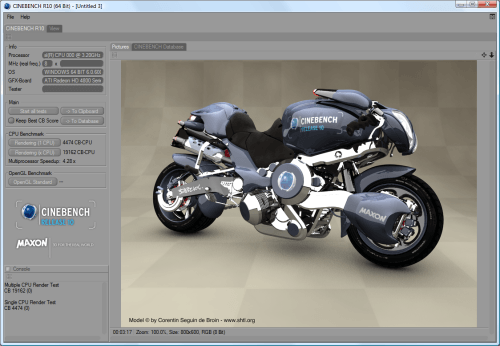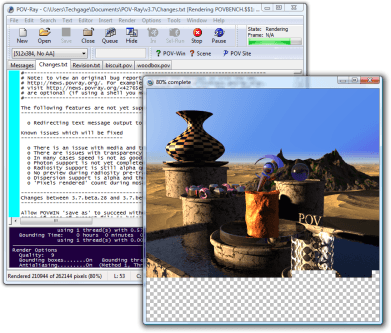- Qualcomm Launches Snapdragon 4 Gen 2 Mobile Platform
- AMD Launches Ryzen PRO 7000 Series Mobile & Desktop Platform
- Intel Launches Sleek Single-Slot Arc Pro A60 Workstation Graphics Card
- NVIDIA Announces Latest Ada Lovelace Additions: GeForce RTX 4060 Ti & RTX 4060
- Maxon Redshift With AMD Radeon GPU Rendering Support Now Available
Q9400S & Q8200S: Intel’s 65W Quad-Cores

The benefits of a low-TDP processor are obvious, but a usual downside is also obvious: low clock speeds. Intel’s changing that thinking with their Core 2 Quad “S” series, which includes the Q9550S, Q9400S and also the Q8200S. Compared to their non-“S” variants, they draw less power and run cooler, all while retaining the performance they’ve become known for.
Page 4 – Workstation: Autodesk 3ds Max, Cinebench, POV-Ray
Autodesk’s 3ds Max is without question an industry standard when it comes to 3D modeling and animation, with DreamWorks, BioWare and Blizzard Entertainment being a few of its notable users. It’s a multi-threaded application that’s designed to be right at home on multi-core and multi-processor workstations or render farms, so it easily tasks even the biggest system we can currently throw at it.
For our testing, we use two project files that are designed to last long enough to find any weakness in our setup and also allows us to find a result that’s easily comparable between both motherboards and processors. The first project is a dog model included on recent 3ds Max DVD’s, which we infused with some Techgage flavor.
Our second project is a Bathroom scene that makes heavy use of ray tracing. Like the dog model, this one is also included with the application’s sample files DVD. The dog is rendered at a 1100×825 resolution, while the Bathroom is rendered as 1080p (1920×1080).

Once again, our Q9400’s don’t vary much in their results, and that’s a theme we’ll be able to expect to see all throughout this article. Both CPUs are identical aside from the TDP, as mentioned, so the performance isn’t supposed to vary in least, and that’s evidenced well here.
The Q8200S is an interesting target though, since this is the first time we’ve had one in our lab. For Intel’s lowest-priced 45nm Quad-Core offering (assuming we are dealing with the non-“S” version), it’s quite a performer. It costs less than the Dual-Core E8600, but when it comes to heavily multi-threaded applications like this, it leaves any Dual-Core in the dust.
Cinebench R10
Like 3DS Max, Cinema 4D is another popular cross-platform 3D graphics application that’s used by new users and experts alike. Its creators, Maxon, are well aware that their users are interested in huge computers to speed up rendering times, which is one reason why they released Cinebench to the public.
Cinebench R10 is based on the Cinema 4D engine and the test consists of rendering a high-resolution model of a motorcycle and gives a score at the end. Like most other 3D applications on the market, Cinebench will take advantage of as many cores as you can throw at it.

Even though we expect to see identical performance between both of our Q9400’s, it’s still fun to see just how close each one of their scores came, especially since they were tabulated by running each test three times and then averaging them. This test also shows-off the slower clock-speed of the Q8200S, which, in the single-threaded test, actually falls behind the inexpensive Pentium E5200. The Q8200S well makes up for it in any multi-threaded application, however.
POV-Ray 3.7
Similar to Cinebench, the “Persistence of Vision Ray Tracer” is as you’d expect, a ray tracing application that also happens to be cross-platform. It allows you to take your environment and models and apply a ray tracing algorithm, based on a script you either write yourself or borrow from others. It’s a free application and has become a standard in the ray tracing community and some of the results that can be seen are completely mind-blowing.
The official version of POV-Ray is 3.6, but the 3.7 beta unlocks the ability to take full advantage of a multi-core processor, which is why we use it in our testing. Applying ray tracing algorithms can be extremely system intensive, so this is one area where multi-core processors will be of true benefit.
For our test, we run the built-in benchmark, which delivers a simple score (Pixels-Per-Second) the the end. The higher, the better. If one score is twice another, it does literally mean it rendered twice as fast.

Following tradition, the Q9400’s are neck-and-neck, which is exactly what we want to see. The Q8200S also performs quite well in its multi-threaded test, but I have to admit, it’s hard to get too excited with anything Core 2 when we see just what kind of monsters the i7 chips are where ray tracing is concerned.
Support our efforts! With ad revenue at an all-time low for written websites, we're relying more than ever on reader support to help us continue putting so much effort into this type of content. You can support us by becoming a Patron, or by using our Amazon shopping affiliate links listed through our articles. Thanks for your support!








